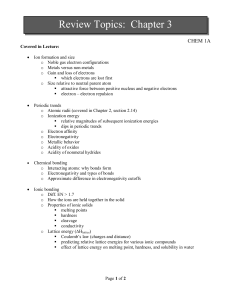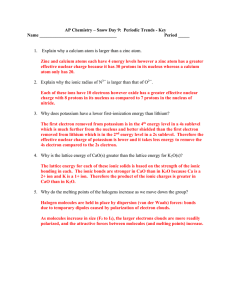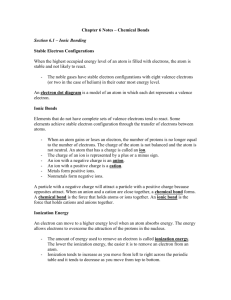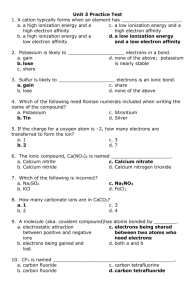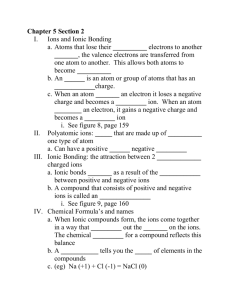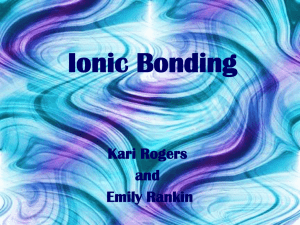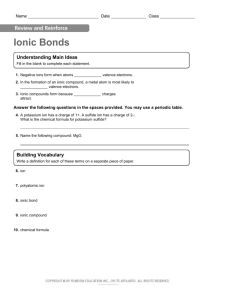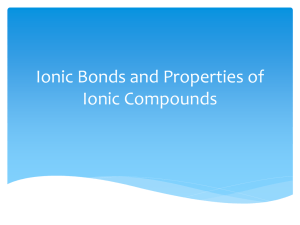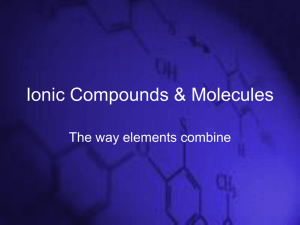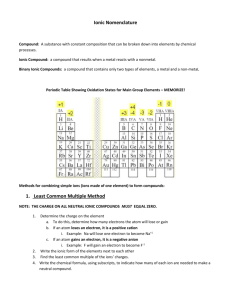Chapter 6_1 Assessment
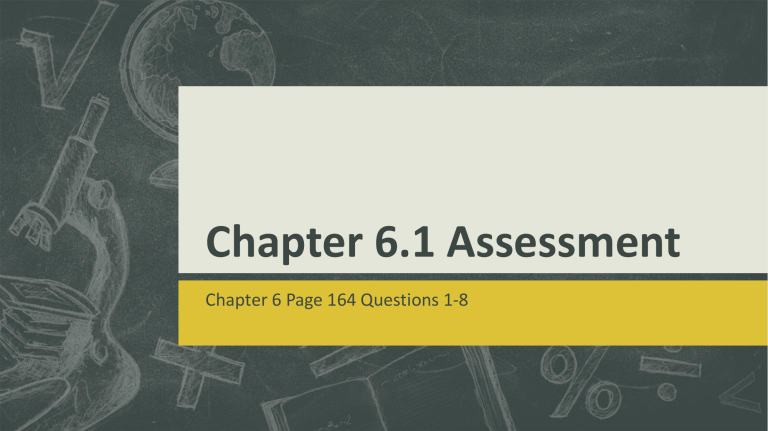
Chapter 6.1 Assessment
Chapter 6 Page 164 Questions 1-8
Question 1:
When is an atom least likely to react?
Question 1: Answer
When is an atom least likely to react?
When the highest energy level of an atom is filled with electrons
Question 2:
Describe one way an element can achieve a stable electron configuration?
Question 2: Answer
Describe one way an element can achieve a stable electron configuration?
Through the transfer of electrons between the atoms
Question 3:
What characteristic of ionic bonds can be used to explain the properties of ionic compounds ?
Question 3: Answer
What characteristic of ionic bonds can be used to explain the properties of ionic compounds ?
The strong attraction among ions within a crystal lattice
Question 4:
Use Ionization energy to explain why metals lose electrons more easily than nonmetals ?
Question 4: Answer
Use Ionization energy to explain why metals lose electrons more easily than nonmetals ?
Metals have a lower ionization energies than non-metals. The Lower the ionization energy , the easier it is to remove an electron from an atom.
Question 5:
Why is a rock salt crystal likely to shatter when struck ?
Question 5: Answer
Why is a rock salt crystal likely to shatter when struck ?
When ions with the same charge are pushed close together, they repel one another
Question 6:
What will the ratio of ions be in any compound formed from a group 1A metal and a group 7A non-metal ?
Question 6: Answer
. What will the ratio of ions be in any compound formed from a group 1A metal and a group 7A non-metal ?
The ratio will be one to one because a group 1A metal loses one electron to achieve a stable electron configuration.
Question 7:
Why do ionic compounds include at least one metal?
Question 7: Answer
Why do ionic compounds include at least one metal?
One element in an ionic compound must form cations, but non-metals tend to form anions.
Question 8:
Based on their chemical formulas which of these compounds is not likely to be an ionic compound : KBr , SO2, or FeCl3 ?
Explain your answer.
Question 8: Answer
SO2 because sulfur and oxygen are both non-metals and unlikely to form cations
